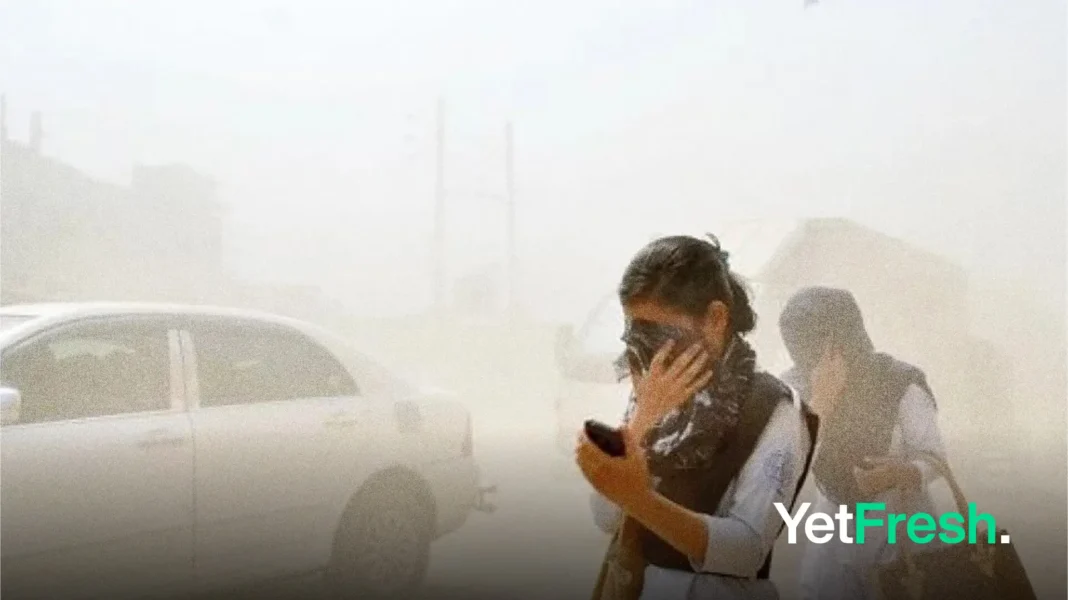Summary:
- Dhaka ranked as the world’s most polluted city on December 12, 2024, with a hazardous AQI score of 392, posing severe health risks.
- The Mirpur Eastern Housing area recorded the highest AQI in Dhaka at 551, followed by other areas like the U.S. Embassy zone (539) and Gulshan 2 (485).
- An AQI above 300 is deemed hazardous, with air pollution in Dhaka exacerbated by industrial emissions, vehicle exhaust, and construction dust.
- Immediate and long-term measures are essential to combat Dhaka’s recurring air pollution crisis, particularly during winter months.
On December 12, 2024, Dhaka, the bustling capital of Bangladesh, was reported to have the most polluted air in the world. This alarming status was confirmed by IQAir, a global air quality monitoring organization, which recorded an Air Quality Index (AQI) score of 392 for the city. Such a high AQI score categorizes the air as “hazardous,” posing severe health risks to its residents.
The situation is particularly dire in certain areas of Dhaka. The Mirpur Eastern Housing area registered an AQI of 551, marking it as the most polluted zone within the city. Other significantly affected areas include the vicinity of the U.S. Embassy with an AQI of 539, Gulshan 2’s Rob Bhaban area at 485, and Agha Khan Academy at 435. Additional areas like Tejgaon’s Shanta Tower and Mohakhali’s ICDDRB also reported dangerously high AQI levels of 397 and 392, respectively.
The AQI is a standardized tool used globally to communicate how polluted the air currently is or how polluted it is forecast to become. It considers several pollutants including particulate matter (PM10 and PM2.5), nitrogen dioxide (NO2), carbon monoxide (CO), sulfur dioxide (SO2), and ozone. An AQI score above 300 is considered hazardous and indicates emergency conditions where everyone may experience more serious health effects.
Historically, Dhaka has grappled with severe air pollution problems, particularly during the winter months when pollution levels tend to peak. The city’s persistent struggle with poor air quality is attributed to various factors including industrial emissions, vehicular exhaust, and construction activities. The World Health Organization (WHO) has highlighted that air pollution is a critical public health emergency, contributing to approximately seven million deaths annually worldwide due to diseases such as stroke, heart disease, and respiratory infections.
The impact of this environmental crisis extends beyond immediate health concerns. Research indicates that prolonged exposure to high levels of air pollution can exacerbate mental health issues such as anxiety and depression. Moreover, children in Dhaka are particularly vulnerable, with studies showing a correlation between air pollution exposure and increased rates of mental health disorders.
Efforts to mitigate this crisis have been ongoing but face significant challenges. Initiatives like “Green Dhaka, Clean Dhaka” aim to improve the city’s environment through activities such as tree planting. However, experts emphasize that more comprehensive measures involving both government action and community participation are essential for sustainable improvement.
As Dhaka continues to navigate this environmental challenge, the need for effective policies and public awareness becomes increasingly critical. Addressing air pollution not only requires immediate action but also long-term strategies to ensure healthier living conditions for all residents.
Source: Daily Inqilab




